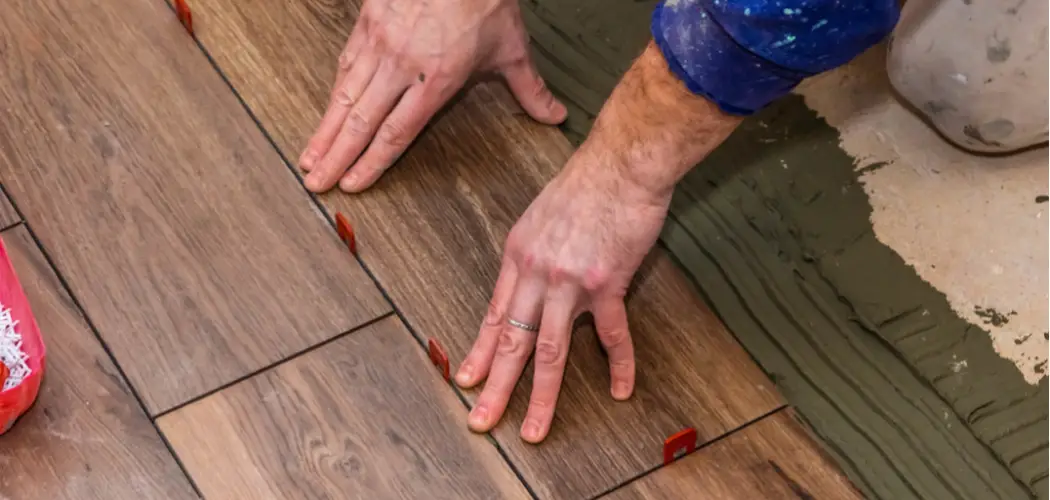Are you ready to tackle that tile project? Tiling over wood flooring can be a great way to upgrade your living room, kitchen, bathroom, or any other space in your home! But it also requires precision and patience. If you’ve been thinking about laying tile on your wood floor, now is the time to get started — and we’re here to help guide you through the entire process.
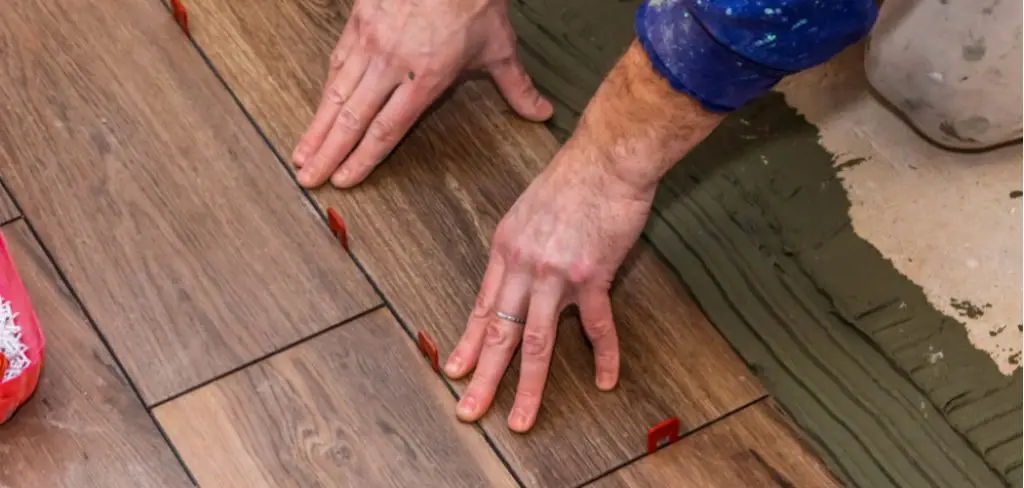
In this blog post, we’ll provide some tips on how to lay tile on wood floor so that they last as long as possible. From selecting the right type of materials for subfloors and understanding moisture resistance ratings to prepping surfaces and correctly applying adhesive – following our expert advice will ensure a beautiful finish that lasts for years!
Necessary Items
Before diving into the tiling process, gathering all necessary items is important. These include:
- Tile of your choice (ensure it is suitable for floor use)
- Underlayment material (such as backer board or concrete board)
- Adhesive appropriate for wood subfloor out and grout sealer
- Tile spacers
- Tile cutter or wet saw
- Measuring tape and level
- Trowel for adhesive application
- Sponge or cloth for grout cleaning
10 Steps on How to Lay Tile on Wood Floor
Step 1: Prepare the Surface
The first step in tiling over wood flooring is properly preparing the surface. This includes removing existing flooring, such as carpet or hardwood, and ensuring the wood subfloor is clean, flat, and structurally sound. If any areas feel weak or unstable, reinforce them with additional screws.
It’s also important to check the moisture levels in your wood subfloor before proceeding. A moisture meter can be used to ensure that the subfloor is below 4% moisture content – this helps prevent future damage to your tiles.
Step 2: Add Underlayment
Once the wood subfloor is ready, add an underlayment material to help support the tiles. Backer boards or concrete boards are popular and can be secured with screws or nails. However, if adding extra height to your floor is a concern, consider using a thinner option like a cement backer board.
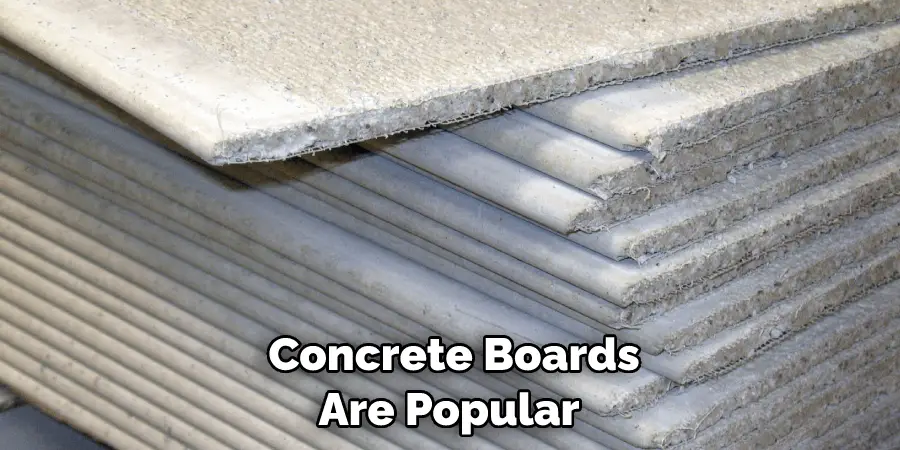
Step 3: Plan Tile Layout
Before applying adhesive, it’s important to plan out the layout of your tiles. Start by measuring the length and width of the room and create a grid on paper to visualize how the tiles will fit. This will also help determine if any cuts need to be made for uneven edges or fixtures in the room.
Step 4: Select Adhesive
Choosing the right adhesive is crucial for a successful tile installation. It’s important to use a flexible adhesive for wood subfloors to withstand movement without cracking. A latex-modified thinset mortar is often recommended for this type of project.
Step 5: Apply Adhesive
Using a trowel, apply the adhesive to the underlayment in an even layer. It’s important to only spread enough adhesive for a few tiles at a time to prevent it from drying out too quickly.
Step 6: Lay the Tiles
Start laying your tiles according to your planned layout in one corner of the room. Use tile spacers between each tile to ensure even spacing for grout lines, and use a level periodically to ensure they are flat and even.
Step 7: Cut Tiles When Necessary
As you reach the edges of the room or encounter fixtures, you may need to cut tiles to fit. Use a tile cutter or wet saw to make straight cuts and adjust as needed.
Step 8: Allow Adhesive to Dry
After all tiles are laid, allow the adhesive to dry for at least 24 hours before proceeding. This will ensure that the tiles are securely bonded to the underlayment.
Step 9: Apply Grout
Once the adhesive is dry, it’s time to apply grout. Use a rubber float to push the grout into the joints and wipe away any excess with a damp sponge or cloth. Allow the grout to dry for 48 hours before walking on the tiles.
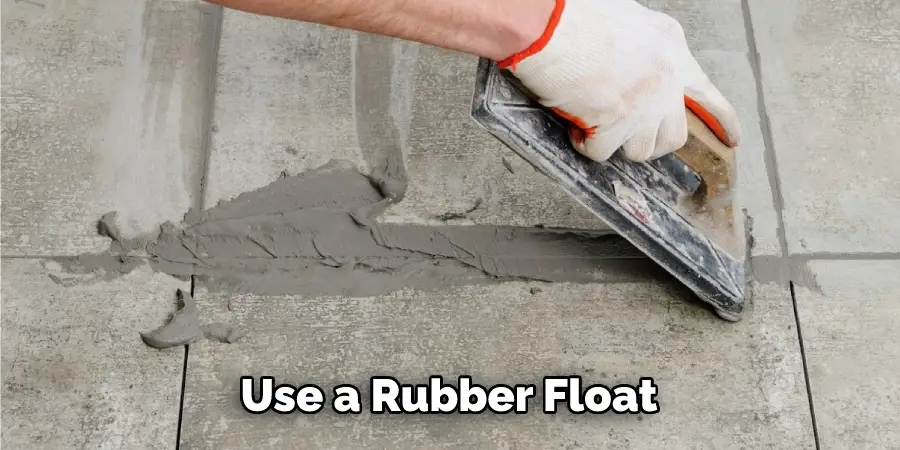
Step 10: Seal Grout
To protect your grout from stains and moisture, apply a grout sealer according to the manufacturer’s instructions. This will help maintain the appearance and durability of your tiled wood floor.
8 Care Tips for Tile on Wood Floor
1. Clean Up Spills Immediately
Wood is porous, so cleaning up any spills or accidents is important. This will prevent the moisture from seeping into the wood and compromising the integrity of your tile installation.
2. Use Rugs or Mats in High Traffic Areas
Consider placing rugs or mats in high-traffic areas such as entryways or hallways to protect your tiles from scratches or wear.
3. Avoid Harsh Chemicals
When cleaning your tiled wood floor, avoid using harsh chemicals that could damage the grout or tiles. Stick to mild detergents and warm water for routine cleaning.
4. Regularly Sweep or Vacuum
Regularly sweep or vacuum with a soft brush attachment to prevent dirt and debris from building up on your floor.
5. Use Felt Pads on Furniture
To avoid scratching your tiles, consider placing felt pads on the bottom of furniture legs before moving them across the floor.
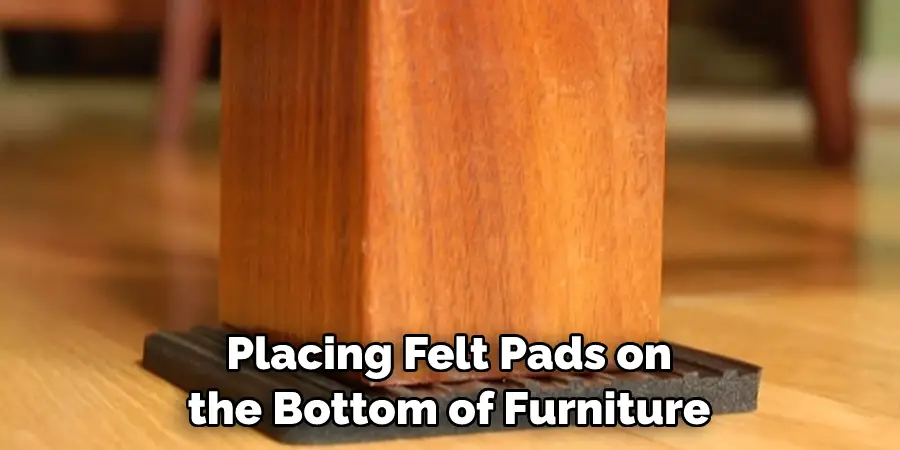
6. Check and Repair Grout as Needed
Over time, grout may crack or become damaged. It’s important to regularly check for these issues and repair them as needed to maintain the integrity of your tiled wood floor.
7. Keep Moisture Levels in Check
As mentioned earlier, it’s important to regularly check the moisture levels in your wood subfloor and take steps to prevent excess moisture from damaging your tiles.
8. Reapply Grout Sealer Periodically
To ensure maximum protection for your grout, consider reapplying a grout sealer every 1-2 years or as the manufacturer recommends. This will help keep your tiled wood floor looking beautiful for years.
Overall, tiling over a wood floor is possible with the right preparation and technique. By following these steps and care tips, you can achieve a stunning and long-lasting result that adds value to your home.
Frequently Asked Questions
Can I Tile Over Any Type of Wood Flooring?
It’s best to only tile over a wood subfloor, not directly onto hardwood or laminate flooring. It’s also important to check the subfloor’s moisture levels and structural integrity before proceeding.
Do I Need to Remove Baseboards Before Tiling?
It’s best to remove baseboards before tiling to lay tiles against the wall for a professional finish. If removing them is not an option, consider using quarter-round trim along the edges instead.
How Do I Handle Transition Areas?
If your wood floor transitions to another type of flooring, you can use a transition strip or a gradual slope using mortar to blend the two types. Planning and executing these areas carefully is important for a seamless transition.
Can Tiled Wood Floors Be Refinished?
It is not recommended to refinish tiled wood floors as the grout and adhesive may be damaged in the refinishing process. It’s best to maintain the appearance of your floor through regular cleaning and occasional grout resealing.
Is Professional Installation Necessary?
While it is possible to tile over a wood floor yourself, it can be a challenging and time-consuming project. For best results, consider hiring a professional with experience in this type of installation. However, having the necessary skills and knowledge can also be a rewarding DIY project. Make sure to thoroughly research and plan before starting the project.
What Types of Tiles Can Be Used for Tiling Over Wood Flooring?
Porcelain or ceramic tiles are recommended for tiling over wood flooring due to their durability and moisture resistance. However, other types of tiles, such as natural stone, may also be suitable depending on your project’s specific conditions and needs.

Is Tiling Over a Wood Floor Cost-Effective?
Sometimes, tiling over a wood floor may be more cost-effective than tearing out the existing floor and installing new subflooring. It’s best to consult with a professional and compare costs before deciding. Additionally, tiling can improve the value and appearance of your home, making it a worthwhile investment in the long run.
Is Tiled Wood Flooring Suitable for All Areas of the House?
Tiled wood flooring suits many house areas, including kitchens, bathrooms, entryways, and living spaces. However, there may be better choices for areas with excessive moisture or high foot traffic, such as a basement. Consult with a professional to determine the best type of flooring for each area of your home.
How Long Does Tiled Wood Flooring Last?
With proper installation and care, tiled wood floors can last many years. The lifespan will also depend on factors such as the type of tiles used, level of foot traffic, and maintenance routines. Regularly check and maintain your tiled wood floor to ensure its longevity. Overall, tiling over a wood floor can be a beautiful and practical flooring solution for many homes with proper care and maintenance. Remember these tips for a successful project that you can enjoy for years to come.
Conclusion
In conclusion, tiling over a wood floor can be a great option for homeowners looking to update their floors without the hassle and cost of removing and replacing the existing subfloor. With proper preparation, installation, and maintenance, you can achieve a stunning, durable tiled wood floor that adds value to your home.
Remember to consult with a professional for any concerns or if you need clarification on any steps in the process. Remember to keep these tips on how to lay tile on wood floor in mind for a successful project that you can enjoy for years to come.

